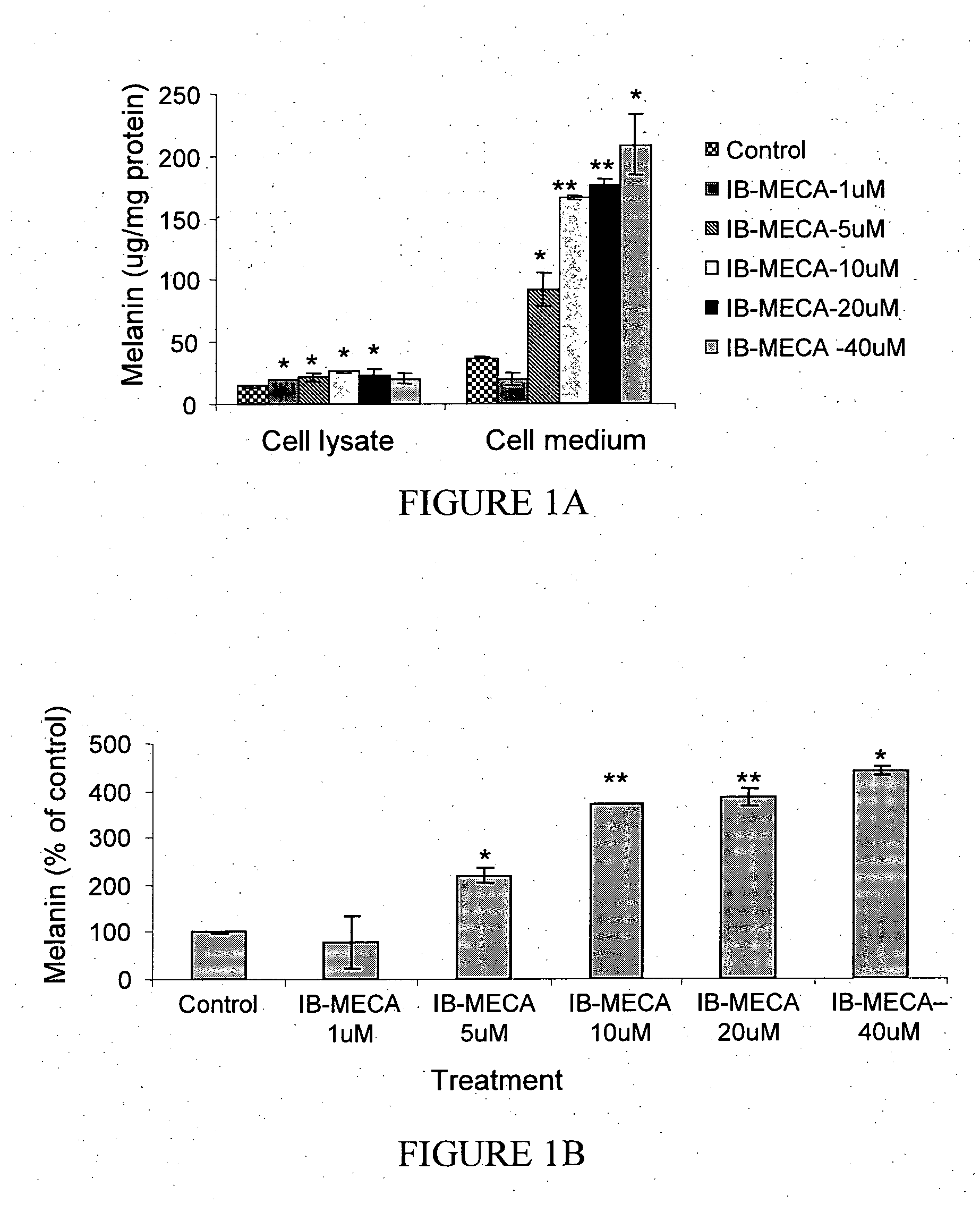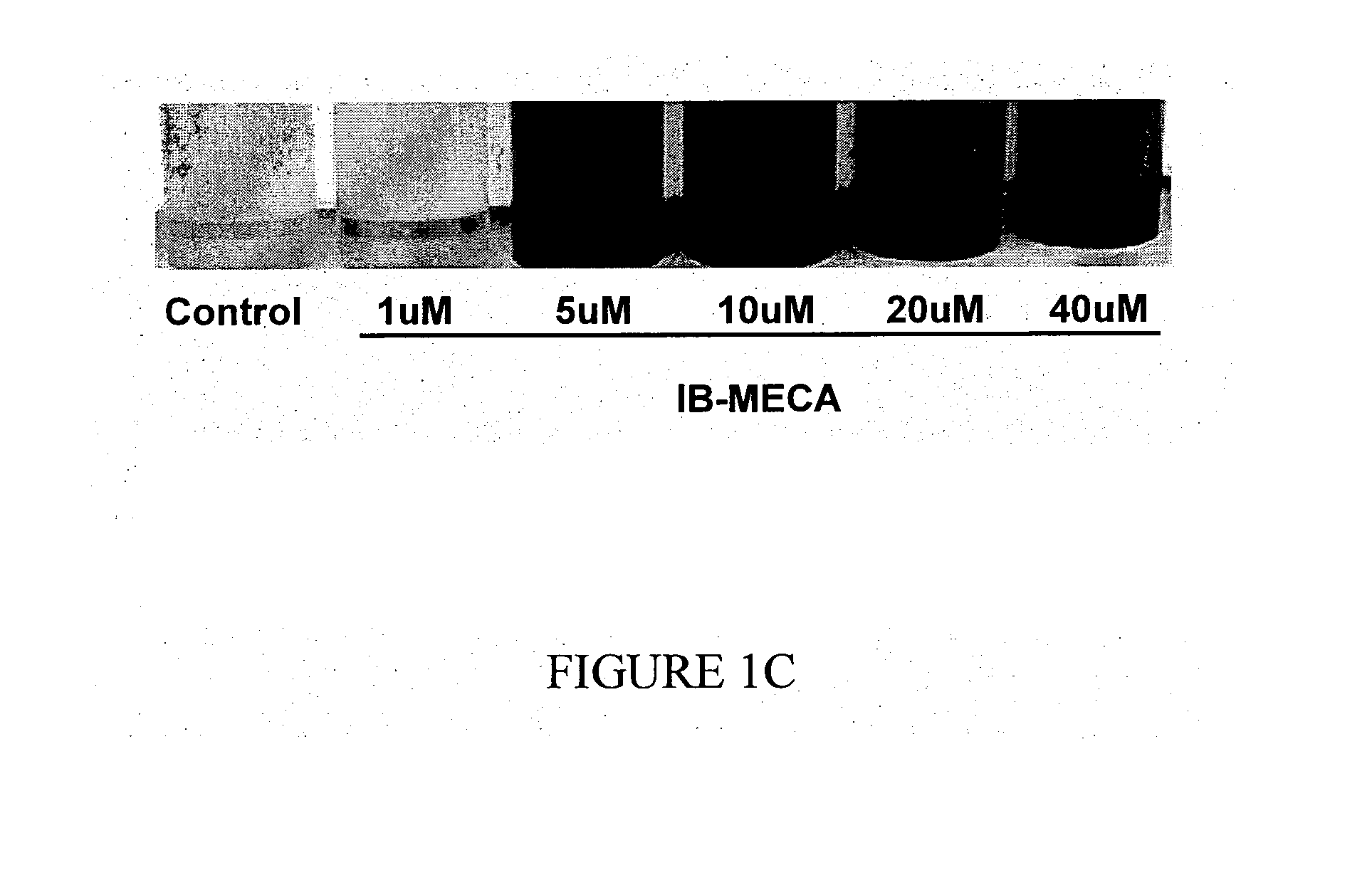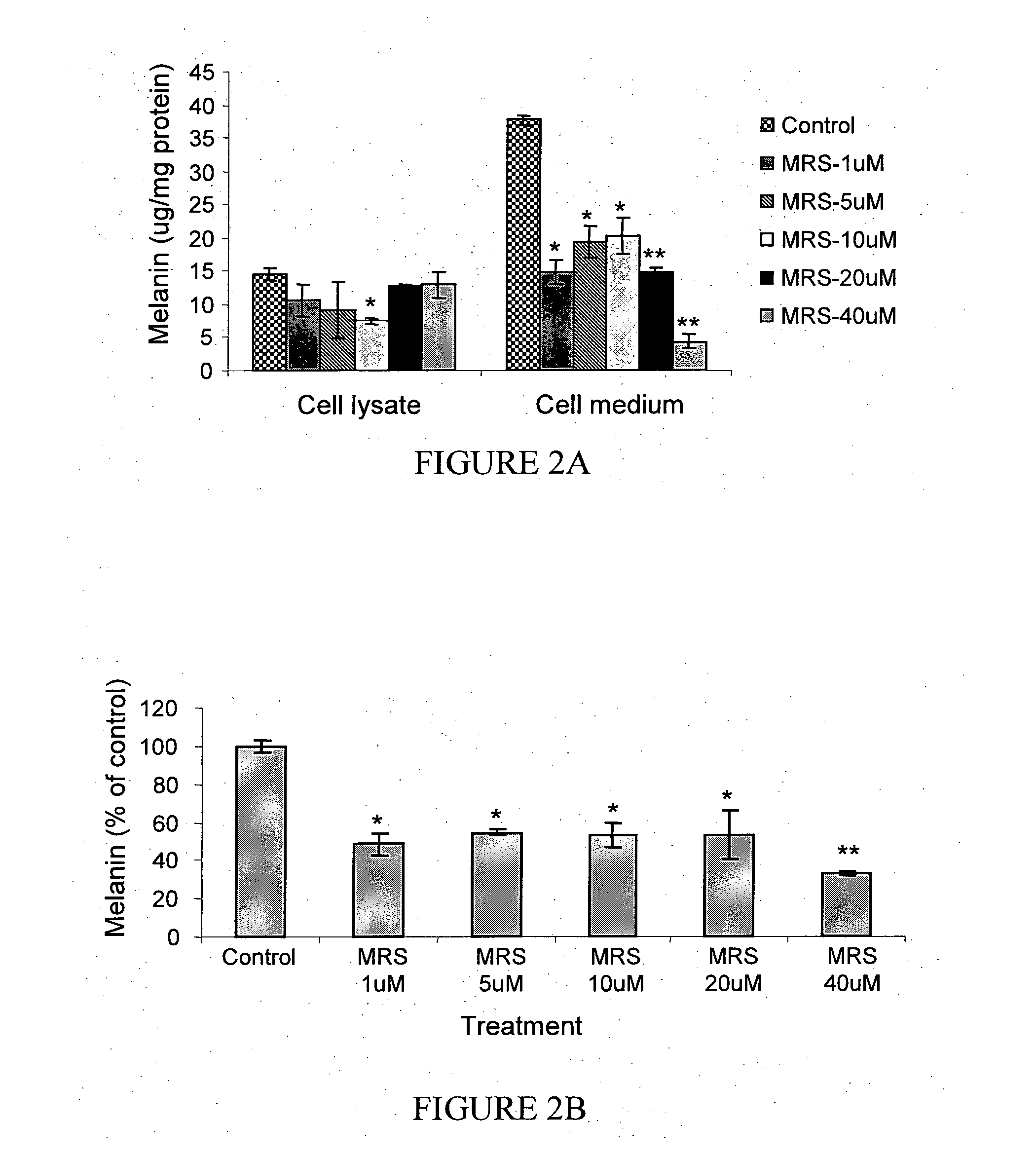A3 adenosine receptor ligands for modulation of pigmentation
- Summary
- Abstract
- Description
- Claims
- Application Information
AI Technical Summary
Benefits of technology
Problems solved by technology
Method used
Image
Examples
example 1
The A3 Adenosine Receptor Agonist IB-MECA Exerts a Stimulatory Effect on Melanin Synthesis and Secretion in B16 Melanocytes
[0198]Treatment of B16 melanocytes with increasing doses of IB-MECA resulted in a dose dependent increase of the melanin level, as shown in FIG. 1. Specifically, as shown in FIG. 1A, at the highest IB-MECA concentration, the intracellular melanin level was increased by 143±4.1% while the secretion of melanin to the media was increased by 554±23.8% (p<0.001). As shown in FIG. 1B, exposure of the cells to 5 μM IB-MECA resulted in an increase of the total melanin level by 220±19.4% (p<0.001), while treatment with 10 μM of IB-MECA increased the total level by 369±1%, and treatment with 40 μM of IB-MECA increased the melanin level by 441±53.8%. Accordingly, the stimulatory effect of IB-MECA on the melanin level was attributable mainly to the increase in the secretion of melanin by B16 melanocytes (FIGS. 1A-1C).
example 2
The A3 Adenosine Receptor Antagonist MRS-1523 Exerts an Inhibitory Effect on Melanin Synthesis in B16 Melanocytes
[0199]MRS-1523 affected both the synthesis and the secretion of melanin by the cells as shown in FIG. 2. Exposure of melanocytes to 40 μM MRS-1523 caused a decrease in total melanin by 67±1.07% (p<0.001; FIG. 2B). This treatment effectively blocked melanin secretion by 88±1.7%, while the melanin level within the cells decreased only by 11±2.3% (FIG. 2A). Similarly, upon treatment of the cells with 1 μM and 5 μM MRS-1523, the melanin level in the cells decreased only by 27±5.7% and 24±1.7% respectively. However, this treatment was associated with a significant decrease of the intracellular melanin (48%±4.9, p<0.05). At all concentrations tested within the range of 1-40 μM MRS-1523, the secreted and the total melanin levels were lower than that of the control (p<0.05, FIGS. 2A and 2B).
[0200]At lower concentrations of MRS-1523 the modulating effect on melanin synthesis and s...
example 3
Time-Dependent Melanin Synthesis and Secretion by B16 Melanocytes Treated with IB-MECA or MRS-1523
[0201]B16 melanocytes were exposed to 10 μM of IB-MECA or 10 μM MRS-1523 and the melanin levels in the cells and in the media were monitored at different time points following exposure to the ligands. The results indicated that detectable levels of melanin secreted to the medium (extracellular) were not observed after 24 hours of exposure to either IB-MECA or MRS-1523. However, as shown in. FIG. 3A, confocal microscopy showed observable changes in melanin level and distribution in the cytosol of the treated cells. Specifically, more melansomes were observed in the cell periphery and in the dendritic sites of the control and IB-MECA treated melanocytes as compared to MRS-1523 treated cells (melansomes indicated by arrows). Moreover, in cells treated with IB-MECA, melanosomes were accumulated in the perinuclear areas (melansomes indicated by arrows). FIG. 3B depicts transfer of melanosome...
PUM
 Login to View More
Login to View More Abstract
Description
Claims
Application Information
 Login to View More
Login to View More - R&D
- Intellectual Property
- Life Sciences
- Materials
- Tech Scout
- Unparalleled Data Quality
- Higher Quality Content
- 60% Fewer Hallucinations
Browse by: Latest US Patents, China's latest patents, Technical Efficacy Thesaurus, Application Domain, Technology Topic, Popular Technical Reports.
© 2025 PatSnap. All rights reserved.Legal|Privacy policy|Modern Slavery Act Transparency Statement|Sitemap|About US| Contact US: help@patsnap.com



